
Succulent Care: Treating Brown Spots and Disease

Succulents are a popular choice for plant enthusiasts due to their unique shapes, vibrant colors, and low maintenance requirements. These plants, which are known for their ability to store water in their leaves, are native to arid regions and have adapted to survive in harsh conditions. However, even the hardiest succulents can experience issues such as brown spots and diseases, which can be detrimental to their health and appearance.
We will explore the common causes of brown spots on succulents and how to treat them effectively. We will also discuss some of the most common diseases that can affect succulents, including fungal infections and viral diseases. Additionally, we will provide tips on how to prevent these issues from occurring in the first place, as well as general care guidelines to ensure your succulents thrive and remain healthy.
- Keep succulents in well-draining soil to prevent overwatering
- Avoid watering succulents overhead to prevent fungal diseases
- Trim off any brown or diseased leaves to prevent further spread
- Treat brown spots with a fungicide if necessary
- Keep succulents in a location with good air circulation to prevent disease
- Avoid overcrowding succulents to prevent the spread of disease
- Apply a balanced fertilizer to keep succulents healthy and prevent nutrient deficiencies
- Monitor for pests and treat accordingly to prevent damage and disease
- Provide adequate sunlight for succulents to prevent stress and disease
- Avoid extreme temperature changes to prevent stress and disease
- Frequently Asked Questions
Keep succulents in well-draining soil to prevent overwatering
One of the most common causes of brown spots and disease in succulents is overwatering. These plants are native to arid climates and are adapted to thrive in dry conditions. Therefore, it is crucial to ensure that your succulents are planted in well-draining soil.
When succulents are exposed to excessive moisture, their roots become waterlogged, leading to root rot and the formation of unsightly brown spots on the leaves. To avoid this, use a potting mix specifically designed for succulents or create your own by mixing regular potting soil with perlite or coarse sand. This will allow water to flow through the soil easily, preventing water from sitting around the roots for too long.
Additionally, it is essential to choose pots with drainage holes. These holes allow excess water to escape, further preventing water accumulation. If you have a beautiful pot without drainage holes, consider using a nursery pot with drainage and then placing it inside the decorative pot. This way, you can water your succulent thoroughly and then remove any excess water that collects in the outer pot.
Pro Tip: To check if your succulent needs watering, stick your finger about an inch into the soil. If it feels dry, it's time to water. However, if it still feels moist, hold off on watering for a few more days.
 How to Remove White Mold From Succulents: Essential Tips and Tricks
How to Remove White Mold From Succulents: Essential Tips and TricksAvoid watering succulents overhead to prevent fungal diseases
When it comes to succulent care, one of the most important things to keep in mind is to avoid watering them overhead. This means refraining from using a watering can or sprinkler that will shower the entire plant with water. Why is this crucial? Well, watering succulents overhead can increase the risk of fungal diseases.
Succulents are known for their ability to store water in their leaves, stems, and roots. However, excessive moisture can create a favorable environment for fungi to thrive. When water accumulates on the leaves and stems of succulents, it can lead to the development of brown spots, which are often an indication of fungal infections.
To prevent these unsightly brown spots and keep your succulents healthy, it's best to water them at the base. This method allows the water to reach the roots directly, without wetting the leaves and stems. You can use a narrow spout watering can or a syringe to target the soil around the base of the plant.
Here are a few tips to ensure proper watering and minimize the risk of fungal diseases:
- Water your succulents thoroughly but infrequently. Succulents prefer being underwatered rather than overwatered, as they are more susceptible to root rot caused by excess moisture.
- Allow the soil to dry out completely between watering sessions. This ensures that the roots have a chance to breathe and prevents the growth of fungi.
- Use well-draining soil specifically formulated for succulents. This type of soil allows excess water to drain away quickly, reducing the chances of fungal growth.
- Avoid misting or spraying water on the leaves of your succulents, as this can create a damp environment that encourages fungal growth.
By following these guidelines and avoiding overhead watering, you can minimize the risk of brown spots and fungal diseases in your succulents. Remember, prevention is always better than cure when it comes to plant care!
Trim off any brown or diseased leaves to prevent further spread
 Understanding the Causes of Spider Web-Like Growths in Succulents
Understanding the Causes of Spider Web-Like Growths in SucculentsIf you notice brown spots or signs of disease on your succulent leaves, it's important to take action quickly to prevent the problem from spreading. Trimming off the affected leaves is the first step in treating the issue.
To trim off the brown or diseased leaves, start by identifying the affected areas. Look for any discoloration, spots, or signs of rot on the leaves. Once you've located the damaged leaves, use a clean and sharp pair of scissors or pruning shears to carefully remove them.
Make sure to cut the leaves as close to the stem as possible without damaging the healthy parts of the plant. This will help prevent any remaining disease from spreading further. It's important to clean your tools before and after use to avoid spreading any potential pathogens.
After removing the affected leaves, it's essential to dispose of them properly. Do not compost them, as the disease or fungus may still be present. Instead, seal them in a plastic bag and throw them away in the trash to prevent any potential contamination.
Trimming off the brown or diseased leaves not only helps prevent the spread of disease but also improves the overall appearance of your succulent. Removing damaged leaves allows the plant to focus its energy on growing healthy, vibrant foliage.
Remember, prevention is key when it comes to succulent care. Regularly inspect your plants for any signs of brown spots or disease, and take immediate action to address the issue. By practicing good hygiene and promptly removing affected leaves, you can keep your succulents healthy and thriving.
Treat brown spots with a fungicide if necessary
If you notice brown spots on the leaves or stems of your succulent, it may be a sign of a fungal infection. Fungal diseases can be common in succulents, especially if they are exposed to excessive moisture or poor air circulation. Fortunately, there are steps you can take to treat and prevent further spread of the disease.
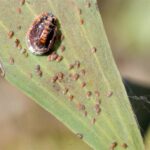 Effective Solutions for Eliminating Mealy Bugs on Succulent Plants
Effective Solutions for Eliminating Mealy Bugs on Succulent PlantsStep 1: Identify the cause of the brown spots. It's important to determine whether the spots are caused by a fungal infection or other factors such as sunburn, overwatering, or physical damage.
Step 2: If you suspect a fungal infection, remove the affected leaves or stems carefully using clean, sharp scissors or shears. This helps prevent the spread of the disease to healthy parts of the plant.
Step 3: Apply a fungicide specifically formulated for succulents. Follow the instructions carefully and apply the fungicide directly to the affected areas. Be sure to cover both the top and bottom surfaces of the leaves as well as the stems.
Step 4: Allow the succulent to dry completely before watering again. Fungal infections thrive in moist conditions, so it's crucial to avoid overwatering or allowing water to sit on the leaves or in the soil for extended periods.
Step 5: Improve air circulation around your succulents. Proper ventilation helps prevent the buildup of moisture and reduces the risk of fungal infections. You can achieve this by placing your succulents in an area with good airflow or using a small fan to gently circulate the air.
Step 6: Monitor your succulent closely for any signs of recurring brown spots or new infections. If the problem persists, consider adjusting your watering routine, repotting the plant in fresh, well-draining soil, or seeking advice from a plant care professional.
By taking these steps, you can effectively treat brown spots caused by fungal infections and maintain the health and beauty of your succulent collection.
 Understanding the Factors behind Succulent Death Blooms
Understanding the Factors behind Succulent Death BloomsKeep succulents in a location with good air circulation to prevent disease
One of the keys to keeping your succulents healthy and disease-free is to provide them with good air circulation. Succulents thrive in environments with good air movement, as stagnant air can create the perfect conditions for disease to take hold.
When choosing a location for your succulents, opt for areas that are well-ventilated and receive ample fresh air. Avoid placing your succulents in enclosed spaces or areas with poor air circulation, such as closed terrariums or stuffy rooms.
Good air circulation helps to prevent the buildup of moisture around your succulents, which can lead to the development of brown spots and other diseases. By allowing air to flow freely around your plants, you are reducing the chances of fungal or bacterial infections taking hold.
Additionally, proper air circulation aids in regulating the temperature around your succulents, preventing them from getting too hot or too cold. Succulents are naturally adapted to thrive in arid and dry conditions, so maintaining the right temperature and air movement is crucial to their overall health.
Remember to position your succulents in areas with adequate airflow, away from closed windows or vents that could trap moisture or cause temperature fluctuations.
To summarize, here are some key points to keep in mind regarding air circulation for succulent care:
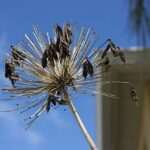 Can a Death Bloom Succulent Be Saved or is it Too Late?
Can a Death Bloom Succulent Be Saved or is it Too Late?- Choose a location with good air movement and fresh air
- Avoid enclosed or stuffy spaces
- Prevent the buildup of moisture by allowing air to flow freely
- Regulate temperature to avoid extreme heat or cold
By prioritizing air circulation in your succulent care routine, you can help prevent the occurrence of brown spots and diseases, ensuring your succulents stay healthy and vibrant.
Avoid overcrowding succulents to prevent the spread of disease
When it comes to succulent care, one of the most important things to keep in mind is to avoid overcrowding your plants. Overcrowding can lead to the spread of disease, as it creates a favorable environment for pests and pathogens to thrive.
When succulents are placed too close to each other, their leaves may touch and create a moist, dark space where fungus can grow. This can result in the development of unsightly brown spots on the leaves, which can eventually spread to the entire plant if not addressed promptly.
To prevent overcrowding, make sure to give each succulent enough space to grow and breathe. This will not only reduce the risk of disease but also promote better air circulation, which is essential for their overall health.
Another advantage of providing adequate space between succulents is that it makes it easier for you to inspect and treat any pests or diseases that may appear. With enough room to maneuver, you can quickly identify any signs of trouble and take appropriate action to prevent further damage.
Remember that prevention is key when it comes to succulent care. By maintaining proper spacing between your plants, you can significantly reduce the risk of brown spots and other diseases from affecting your beloved succulents.
 Understanding the Cause: Why is My Succulent's Base Turning White?
Understanding the Cause: Why is My Succulent's Base Turning White?Apply a balanced fertilizer to keep succulents healthy and prevent nutrient deficiencies
Succulents are known for their ability to thrive in low-nutrient environments, but that doesn't mean they should be deprived of essential nutrients. To keep your succulents healthy and prevent nutrient deficiencies, it is important to apply a balanced fertilizer.
A balanced fertilizer contains a mix of essential nutrients like nitrogen, phosphorus, and potassium, which are crucial for the growth and development of succulents. These nutrients help in maintaining their vibrant colors, promoting strong root growth, and enhancing overall plant health.
To apply the fertilizer, dilute it according to the package instructions and gently pour it around the base of the succulent. Avoid getting the fertilizer on the leaves, as it may cause burns or damage. It is recommended to fertilize succulents once every two to four weeks during the growing season, which is typically spring and summer.
Tip: When choosing a fertilizer, opt for a slow-release or organic option to ensure a gradual nutrient release and avoid the risk of over-fertilization.
Remember, succulents are adapted to survive in harsh conditions, so it is crucial not to over-fertilize them. Excessive fertilizer can lead to an accumulation of salts in the soil, causing root burn and brown spots on the leaves.
Signs of nutrient deficiencies in succulents:
 Causes of Holes in Succulent Leaves: A Comprehensive Guide
Causes of Holes in Succulent Leaves: A Comprehensive Guide- Yellowing leaves: A lack of nitrogen can cause the leaves to turn yellow.
- Purple or reddish leaves: Insufficient phosphorus may result in purplish or reddish discoloration of the leaves.
- Stunted growth: A deficiency in potassium can lead to stunted growth and weak stems.
If you notice any of these signs, it may be an indication that your succulent needs a nutrient boost. Applying a balanced fertilizer can help address these deficiencies and promote the overall health of your succulents.
Preventing and treating brown spots on succulents:
Brown spots on succulents can be a sign of several issues, including overwatering, sunburn, or fungal infections. To prevent brown spots, ensure that you are providing the right amount of water, sunlight, and proper air circulation to your succulents.
- Watering: Succulents are adapted to survive in arid conditions and have low water requirements. Overwatering can lead to root rot and brown spots. Water your succulents only when the soil is dry, and make sure the pot has proper drainage to prevent water accumulation.
- Sunlight: While succulents enjoy bright sunlight, intense and prolonged exposure to direct sunlight can cause sunburn and brown spots. Gradually acclimate your succulents to direct sunlight by exposing them to increasing amounts of sunlight over time.
- Air circulation: Proper airflow is essential for succulents to prevent fungal infections, which can manifest as brown spots. Avoid overcrowding your succulents and ensure they have enough space for air circulation.
If brown spots have already appeared on your succulents, you can take the following steps to treat them:
- Trimming: Carefully remove the affected leaves or parts of the succulent using clean scissors or pruning shears. This will help prevent the spread of any potential infection.
- Fungicide treatment: If the brown spots are caused by a fungal infection, you can use a fungicide specifically formulated for succulents. Follow the instructions on the product label for application and dosage.
- Adjusting care: Review your succulent care routine and make any necessary adjustments to ensure you are providing the right amount of water, sunlight, and air circulation.
By applying a balanced fertilizer and taking proper care of your succulents, you can prevent nutrient deficiencies, promote their overall health, and effectively treat and prevent brown spots. Remember to regularly monitor your succulents for any signs of distress and address them promptly to keep your plants thriving.
Monitor for pests and treat accordingly to prevent damage and disease
One of the most important aspects of succulent care is regularly monitoring your plants for pests. Pests can cause damage to your succulents and also introduce diseases. By being proactive in pest control, you can prevent brown spots and other diseases from affecting your succulents.
 Safe and Kid-Friendly: Non-Toxic Succulents for Pets and Children
Safe and Kid-Friendly: Non-Toxic Succulents for Pets and ChildrenHere are some key steps to follow in order to effectively monitor and treat pests:
- Inspect your succulents regularly: Take the time to closely examine your succulents on a regular basis. Look for any signs of pests such as aphids, mealybugs, or spider mites. These pests can cause brown spots and other damage to your plants.
- Identify the pests: If you notice any signs of pests, it is important to identify them correctly. Different pests may require different treatment methods. For example, aphids can be treated with insecticidal soap, while spider mites may require a more specific miticide.
- Isolate affected plants: If you find any succulents that are infested with pests, it is crucial to isolate them from your other plants. This will help prevent the infestation from spreading and affecting your entire succulent collection.
- Treat affected plants: Once you have identified the pests, it's time to take action. Use appropriate treatments to eliminate the pests and prevent further damage. Follow the instructions on the chosen pest control product carefully to ensure effectiveness and minimize harm to your succulents.
- Maintain proper hygiene: Keeping your succulents clean and free from debris can help prevent the buildup of pests. Regularly remove fallen leaves or any decaying matter around your plants. This will discourage pests from taking up residence and potentially causing diseases.
- Monitor for signs of disease: In addition to pests, succulents are also prone to various diseases. Keep an eye out for any signs of disease such as black spots, rot, or wilting. Promptly address any disease issues to prevent further spread and damage.
- Seek professional help if needed: If you are unsure about identifying or treating pests and diseases, it's always a good idea to consult with a professional. They can provide expert advice and guidance tailored to your specific succulent care needs.
By monitoring for pests and treating them promptly, you can minimize the risk of brown spots and disease in your succulents. Regular care and attention will help your succulents thrive and stay healthy for years to come.
Provide adequate sunlight for succulents to prevent stress and disease
Proper sunlight exposure is crucial for the health and well-being of your succulents. These plants thrive in bright, indirect sunlight, so it's important to find the right balance. Too much direct sunlight can cause stress and lead to the development of brown spots on the leaves.
When placing your succulents indoors, make sure they are near a window that receives plenty of sunlight throughout the day. If you notice your succulents leaning towards the light source, rotate them periodically to ensure even growth.
For outdoor succulents, it's best to find a location that offers partial shade. This will protect them from intense sunlight during the hottest parts of the day. However, be mindful that too much shade can also be detrimental to their overall health.
Pro tip: If you notice brown spots on your succulent leaves, it could be a sign of sunburn or sun damage. Consider moving them to a location with less direct sunlight and gradually increase their exposure over time.
 Causes of Shriveled and Wrinkled Leaves in Succulents
Causes of Shriveled and Wrinkled Leaves in SucculentsAvoid extreme temperature changes to prevent stress and disease
One of the most important aspects of succulent care is ensuring that they are not exposed to extreme temperature changes. Succulents are known for their ability to thrive in hot, arid climates, but sudden shifts in temperature can cause stress and make them more susceptible to diseases.
To prevent this, it is crucial to keep your succulents in an environment with stable temperatures. Avoid placing them near drafty windows or doors, as sudden cold drafts can shock the plants. Similarly, keep them away from heat sources like radiators or vents, as the direct heat can also cause damage.
If you live in an area with fluctuating temperatures, consider moving your succulents indoors during extreme weather conditions. This will provide them with a more controlled environment and protect them from temperature extremes.
Additionally, it is essential to acclimate your succulents when transitioning them between indoor and outdoor environments. Gradually introduce them to the new surroundings by placing them in a shaded area for a few hours each day, gradually increasing their exposure to sunlight. This will help them adjust to the temperature and light changes without causing stress.
By avoiding extreme temperature changes and providing your succulents with a stable environment, you can greatly reduce the risk of stress and disease. This will ultimately result in healthier, more vibrant succulents that will thrive for years to come.
Frequently Asked Questions
1. What causes brown spots on succulents?
Brown spots on succulents are often caused by overwatering, sunburn, or fungal infections. It's important to assess the watering schedule, provide adequate sun protection, and maintain good air circulation to prevent brown spots.
2. How can I treat brown spots on my succulents?
To treat brown spots on succulents, start by identifying the cause. Adjust the watering frequency, ensure the succulent is not receiving direct sunlight for prolonged periods, and treat any fungal infections with a suitable fungicide.
 Succulent Health: Healthy vs Unhealthy - Spot the Difference
Succulent Health: Healthy vs Unhealthy - Spot the Difference3. How do I prevent diseases in my succulents?
To prevent diseases in succulents, it's crucial to provide well-draining soil, avoid overwatering, and maintain proper air circulation. Additionally, regularly inspect your plants for any signs of pests or diseases and take appropriate action promptly.
4. Can I save a succulent with severe disease or rot?
In some cases, it may be challenging to save a succulent with severe disease or rot. However, you can try to salvage healthy parts by carefully removing the affected areas and treating the plant with a fungicide. It's essential to provide optimal growing conditions and closely monitor the plant's progress.
If you want to read more articles similar to Succulent Care: Treating Brown Spots and Disease, you can visit the Pests and Diseases category.

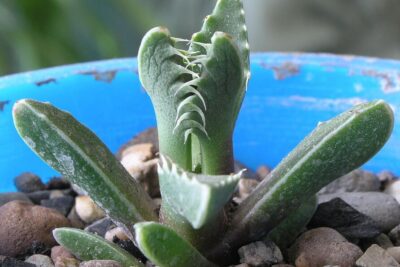

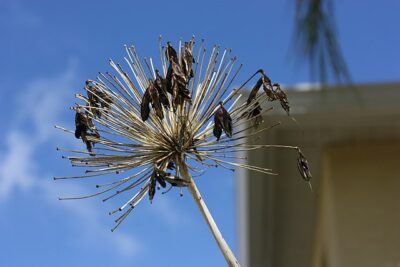
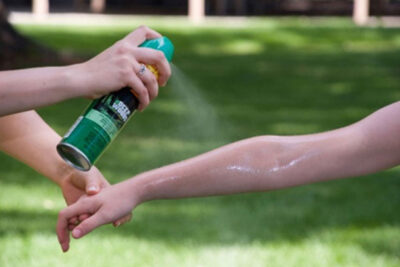

You Must Read